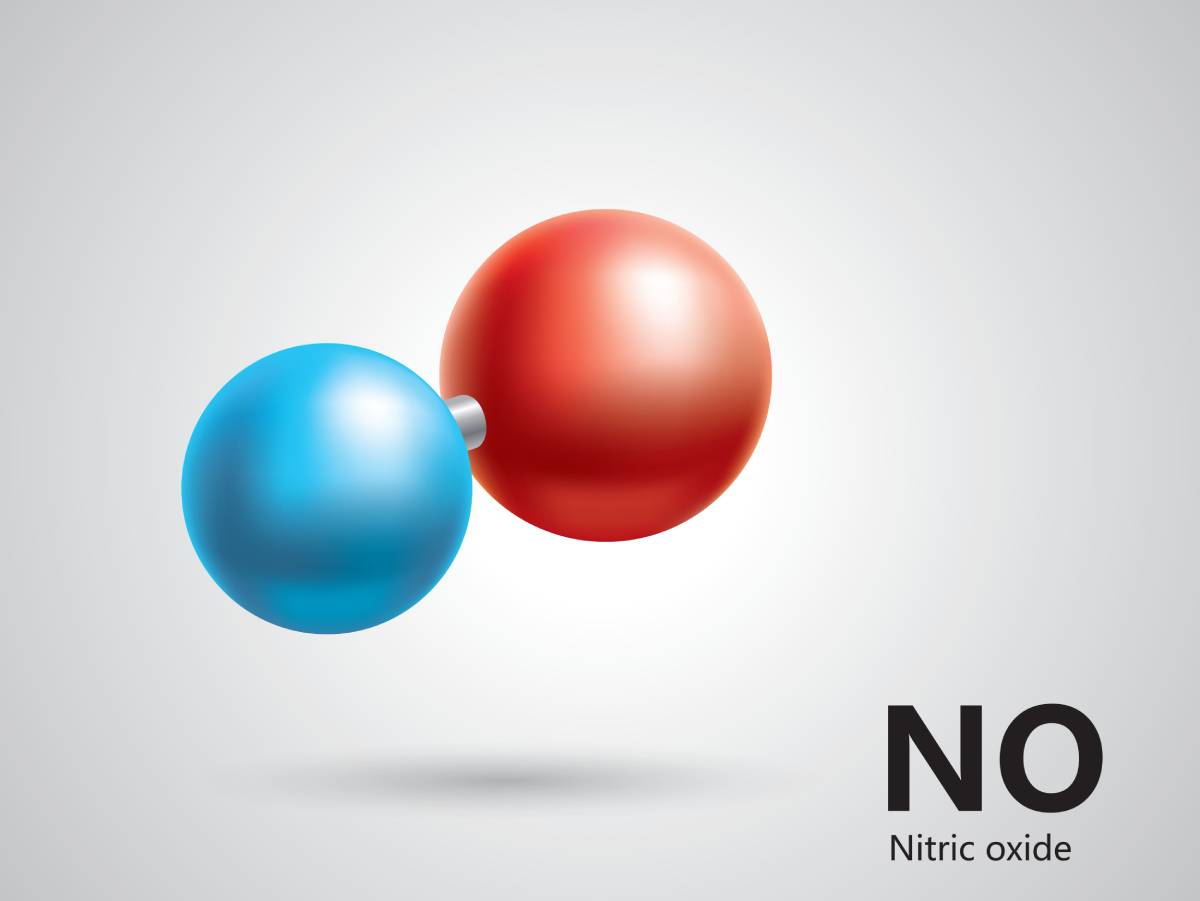Nitric oxide (NO) is produced from the conversion of L-arginine by nitric oxide synthase. This compound is a part of many important physiological functions. Nitric oxide can be administered in a variety of therapeutic forms including inhaled nitric oxide (iNO), NO donor molecule drugs, or it can be incorporated into to a medical device to achieve a biocompatible device (Barnes & Brisbois, 2020). Due to its properties as a pulmonary vasodilator, inhaled nitric oxide was approved in 1999 by the US Food and Drug Administration in the treatment of hypoxic respiratory failure with clinical and/or echocardiographic signs of pulmonary hypertension in term and near-term infants. The off-label use of nitric oxide for oxygenation has grown as well in adult populations. Some adverse effects of iNO include worsening heart failure, hypotension, pulmonary vasospasm and methemoglobinemia purpose (Witek & Lakhar, 2022).
Nitric oxide can act as a vasodilator by binding to guanylyl cyclase and mediating smooth muscle relaxation, particularly in pulmonary vascular endothelial cells. NO also affects platelet activity by reducing platelet aggregation. In patients with acute respiratory distress syndrome (ARDS), iNO exhibited anti-platelet effects but did not change patients’ bleeding times (Samama et al., 1995). NO is also an immunomodulator and can inhibit inflammatory responses to pathogens (Bogdan, 2001). More recently, iNO has been shown to be effective in reducing viral replication in SARS-CoV-1 and SARS Co-V-2 (Akaberi et al., 2020).
In 2019, a second iNO product was approved for the treatment of neonates with pulmonary hypertension. This is the only FDA approved use of iNO because studies have shown that infants with respiratory distress had a decreased incidence of chronic lung disease and death if treated with iNO, especially 7-12 days post birth (Witek & Lakhar, 2022). Other studies have reported that in very preterm infants requiring positive pressure respiratory support, inhaled nitric oxide may be safe but does not improve survival, decrease incidence of bronchopulmonary dysplasia, or prevent poor neurodevelopmental outcomes (Hasan et al., 2017).
In the adult population, nitric oxide use requires more caution. A meta-analysis found that while nitric oxide is associated with some improvement in oxygenation in patients with acute lung injury or ARDS, it does not offer mortality benefit and may cause harm. Furthermore, patients on nitric oxide had a higher risk of developing renal dysfunction (Adhikari et al., 2007). Still, inhaled nitric oxide is used off-label in patients with ARDS and may be used to increase oxygenation (Barnes & Brisbois, 2019).
In the pregnant population, a retrospective cohort study found that iNO therapy reduced the need for supplemental oxygen and in hospital and ICU lengths of stay. No adverse events occurred during the 144 iNO200 treatments, such as rebound pulmonary hypertension. The highest recorded value of methemoglobin, which was 5.3%, decreased after completion of treatment. However, this retrospective study may have some confounding factors, and this area of research will require randomized controlled trials to test the hypothesis (Valsecchi et al., 2022).
Ultimately, iNO has been proven to be an effective respiratory therapy in certain sets of patients such as infants with respiratory distress. Nitric oxide may prove to be very beneficial in a variety of other clinical situations, such as for improving oxygenation. Further research is required to understand specific therapeutic indications and protocols for effective iNO delivery.
References
Akaberi D, Krambrich J, Ling J, et al. Mitigation of the replication of SARS-CoV-2 by nitric oxide in vitro. Redox Biol. 2020;37:101734. doi:10.1016/j.redox.2020.101734
Adhikari NK, Burns KE, Friedrich JO, Granton JT, Cook DJ, Meade MO. Effect of nitric oxide on oxygenation and mortality in acute lung injury: systematic review and meta-analysis. BMJ. 2007;334(7597):779. doi:10.1136/bmj.39139.716794.55
Barnes M, Brisbois EJ. Clinical use of inhaled nitric oxide: Local and systemic applications. Free Radic Biol Med. 2020;152:422-431. doi:10.1016/j.freeradbiomeds.2019.11.029
Bogdan C. Nitric oxide and the immune response. Nat Immunol. 2001;2(10):907-916. doi:10.1038/ni1001-907
Hasan SU, Potenziano J, Konduri GG, et al. Effect of Inhaled Nitric Oxide on Survival Without Bronchopulmonary Dysplasia in Preterm Infants: A Randomized Clinical Trial. JAMA Pediatr. 2017;171(11):1081-1089. doi:10.1001/jamapediatrics.2017.2618
Samama CM, Diaby M, Fellahi JL, et al. Inhibition of platelet aggregation by inhaled nitric oxide in patients with acute respiratory distress syndrome. Anesthesiology. 1995;83(1):56-65. doi:10.1097/00000542-1a99507000-00007
Valsecchi C, Winterton D, Safaee Fakhr B, et al. High-Dose Inhaled Nitric Oxide for the Treatment of Spontaneously Breathing Pregnant Patients With Severe Coronavirus Disease 2019 (COVID-19) Pneumonia. Obstet Gynecol. 2022;140(2):195-203. doi:10.1097/AOG.0000000000004847
Witek J, Lakhkar AD. Nitric Oxide. [Updated 2022 Jun 5]. In: StatPearls [Internet]. Treasure Island (FL): StatPearls Publishing; 2022 Jan-. Available from: https://www.ncbi.nlm.nih.gov/books/NBK554485/
